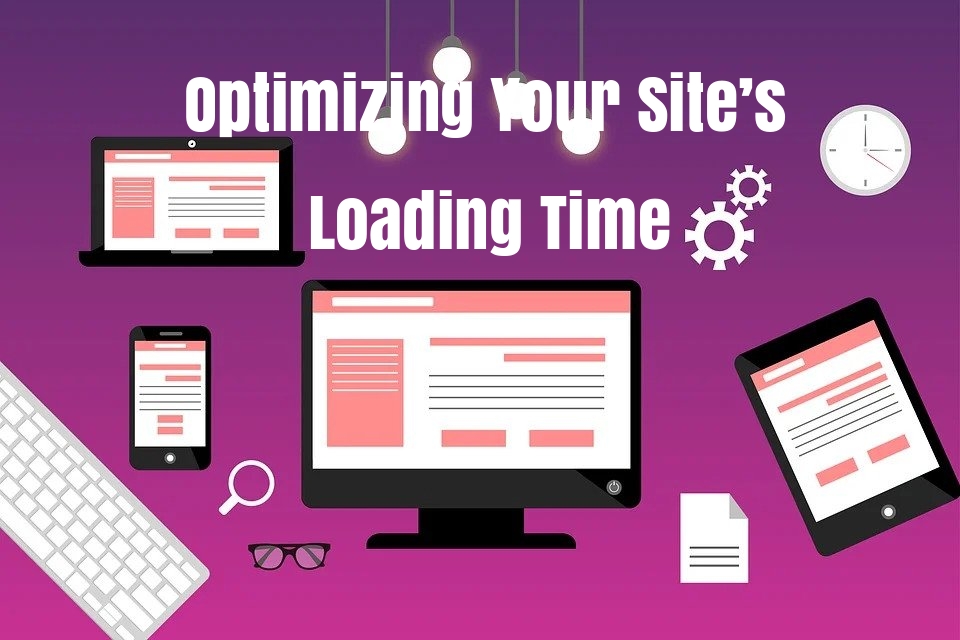
Optimizing Your Business Site’s Loading Time in 7 Easy Steps

By John
Does your business website take more than three seconds to load? If yes, you’re bound to lose half of your site’s visitors before even they open a page on your site.
Even a second can make a lot of difference. If you are serious about your business, you should not allow your business website to be bogged down by non-optimized files, because visitors expect your website to load pretty fast, and won’t stick around if it isn’t fast enough.
And not only would you lose your website visitors, but also experience a decrease in conversion rate. Therefore, you run the risk of your website loosing sales from those customers who may have abandoned cart on your website to others due to slowness.

Here, you’ll learn the 7 easy steps to optimizing your business website’s loading time. But first, let’s explain how page load time can be measured and why it matters!
How Page Load Time can be Measured and Why it matters?
There are basically two ways to measure page speed, namely: Page load time and Time to first byte, with former as the amount of time that passes from the browser sending the request to the server and the page to fully load.
While the latter is the amount time that passes between the request to the server and the browser receiving the first byte of data.
Either method you choose to use, it’s always better to get a faster page load time and worth noting that search engines like Google measure a page’s speed as time to first byte. And page speed is one of the over 200 ranking factors that Google uses to rank a website in search results page.
Besides, web users no longer have patience for websites with poor load time or inadequate speed performance.
7 Easy Steps Optimize Your Business Site’s Loading Time
Now, let’s take a look at the 7 steps to optimize your website for the best possible speed performance.
1. Minimize HTTP Requests
HTTP requests are counted as a browser fetches a page, file or picture from a web server. And the browser limits requests between 4-8 simultaneous connections per domain which means loading over 30 assets at a time is not an option.
Therefore, the more HTTP requests, the longer it takes for the page to retrieve them all, increasing web page’s load time. So, it is best to make use of CSS Sprites to minimize the number of image requests.
And combine inline images into your cached Style sheets, along with background images combined into a single image by using CSS background-image and background-position elements. Also, all JavaScript files should be combined into a single file, with all CSS files as well.
2. Remove Unused Scripts/Files
It is recommended that you take time to evaluate your site to check if there are unused CSS files or scripts across your site.
And the easiest way to go about it is to have your web developer go through your website to check each page, but there are few tools which can be used to remove unused styles from your site and decrease the size of the CSS file.
3. G-Zip Encoding Set Up
The G-Zip is used to compress similar files to reduce the total size during online file transfers, and heavy files on your website can be zipped as well. It saves bandwidth and the download time, also reduces your page loading speed.
Therefore, you should ensure that G-Zip is configured on the server so that it returns zipped content.
4. Website & Browser caching
Website caching allows assets on your site to be downloaded to hard drive once in a cache, or a temporary storage space. These files are stored locally on your system, so it allows subsequent page visit to load faster.
Also, if caching is set up correctly, your web browser can store the resources for subsequent requests. And for repeated page loads these files will be retrieved from the cache instead of downloading them all over again from the server.
The static assets can have a cached lifetime of at least one week, and third party items such as ads or widgets have only one day. While CSS, JS, and media files should have expiration of one week, though ideally, a year, because a longer duration will violet RFC guidelines.
5. Eliminate Inline JS and CSS files
The best practice is to place your site’s JS and CSS within external files, so that when the page loads the browser caches the files externally to reduce the page load time on next requests.
Additionally, having JS and CSS files stored externally allows for easier maintenance of your website.
6. Optimize Dependencies
Keeping an eye on your website’s traffic stats, it’s not advisable to use multiple software to track your site as it may hinder the page load time.
If you are using WordPress, you should enable either WP stats to run on your page or Google Analytics, not both running simultaneously.
It is recommended to also check frequently for updates in the software, but not load updates on a live website. Try to carry out upgrades on a separate server as a test and always keep abreast of software updates.
7. Avoid Redirects & Render Blocking Scripts
It is best to use the ‘async’ attribute to load JavaScript asynchronously or place them at the end of the body.
But try to avoid redirects as it decreases serving speed. Though some redirects are unavoidable, but you must remember that it requires an additional HTTP which increases the page load time. So always check for broken links and fix them without delays.
Conclusion
Above all else, choosing a great web host is a no-brainer option to enhancing your business website performance. SeekaHost provides powerful servers with both their managed & unmanaged hosting plans which leaves you in a comfortable zone.
[Tweet “If you are serious about your business, you should not allow your business website to be bogged down by non-optimized files, because visitors expect your website to load pretty fast, and won’t stick around if it isn’t fast enough”]
The prices are very competitive in the market with a 24×7 Live support. And the best part is that you can get the root access to your VPS and take full control of it, if you choose. Also, you can modify the files you want or install server wide applications without any issues.
